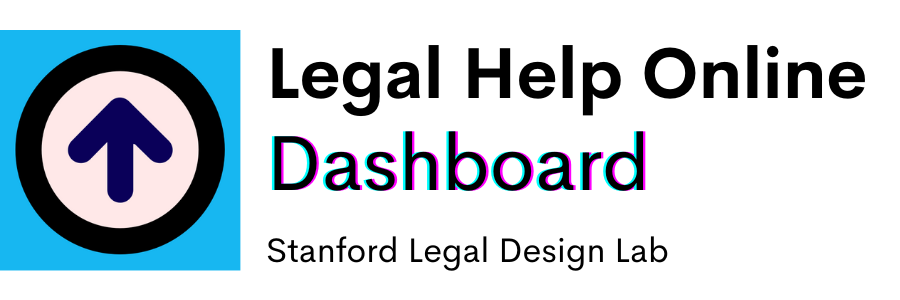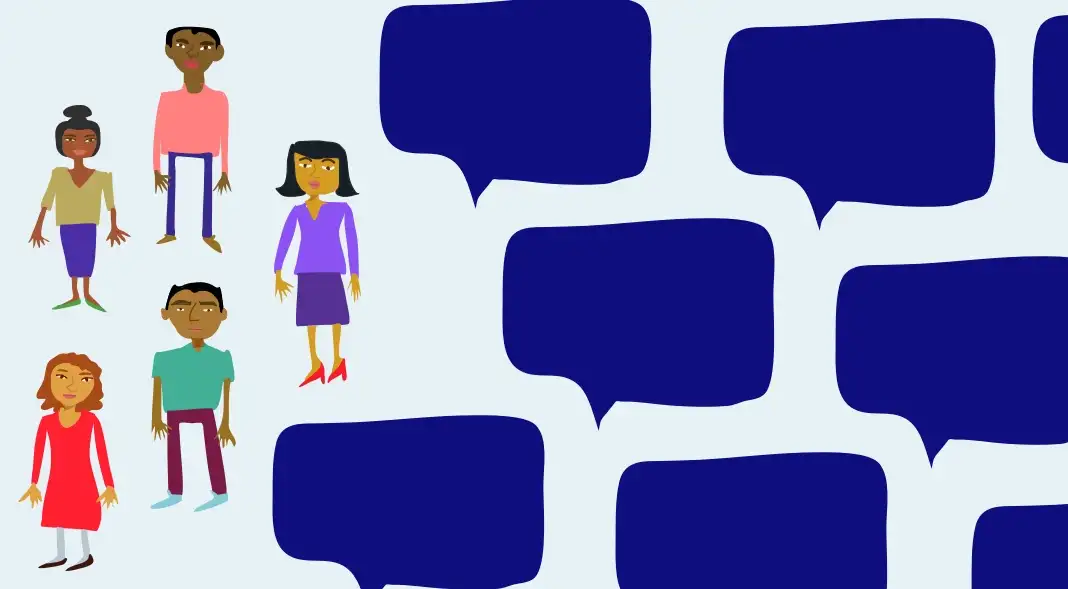Nóra Al Haider and Margaret Hagan
Digital Legal Needs analysis of an online legal clinic to predict seasonal trends in people’s legal needs

Stanford Legal Design Lab collaborated with the American Bar Association to analyze ABA Free Legal Answers. Free Legal Answers is an online legal clinic through which low-income individuals get answers to civil legal questions from lawyers, completely free of charge.
The Lab has analyzed people’s questions from the clinic’s data from between 2012 to 2019. During this period, there were tens of thousands of questions asked across the many states that Free Legal Answers is offered. Each of the questions was self-labeled by the user (or, by the platform administrator) with the broad legal category it belonged to — like Family, Housing, Veterans, Employment, or Consumer.

Digital legal needs analysis of the clinic’s questions has helped us identify what trends exist in people’s use of the Free Legal Answers clinic and what needs they are coming to the clinic to get help with.
What can we do with this digital legal needs analysis? It helps the ABA and other legal service providers to develop smarter tools and strategies to address clients’ needs.
Our first focus has been on seasonal trends throughout a calendar year:
- When should legal services hold public education campaigns about legal needs?
- When should they conduct marketing and buy ads?
- When should they be recruiting volunteers to serve more people?
- After a natural disaster, when are people seeking help?
Our second focus has been on getting the messaging right. What words should providers use in outreach and advertisements, to resonate with the target audience?
- What phrases do people use to describe their legal needs?
This report has recommendations for the ABA and other legal services groups about how to use data to best communicate legal information, mitigate the effects of legal problems, and recruit attorneys to assist. Digital legal needs analysis has the potential to predict legal problems before they occur, thereby enabling advocates to pre-empt access-to-justice challenges at the outset.
1: General Outreach for Legal Services in the Late Summer to Early Fall
Generally, the heaviest usage of Free Legal Answers occurs from August to October. This holds true across various states, for several years, and across most legal issue areas.

During these months, if there was wider outreach (through marketing campaigns, events, and other channels), then a wider group of people — who might also be experiencing a spike in legal needs during these months, but who aren’t aware of legal help services — may become aware of Free Legal Answers.
2: Seasonal Issue-Area Targeted Outreach
During known seasonal spikes for particular issue areas, there might be outreach targeting these specific needs.
For example,
- Questions related to education problems peaked in February-March and August.
- Income maintenance questions peaked between February and April.
- Work and employment questions peaked during October to November.
- Sexual assault questions peaked in July and October (and dropped significantly in February and March).
These seasonal peaks can guide marketing and event outreach, in which the legal services community coordinates issue-area campaigns to engage a wider group of people who potentially have these needs during these times. It might be through special awareness months, series of clinics and know-your-rights events, advertisement purchases, news media collaborations, or events with community partners.

3: Preventative Public Education During Months Before Spikes
Data-driven action should not only be taken during the month in which the trend or decline of a legal issue takes place. Data analysis can also be used to take preventative action.
For example, if family issues are spiking in late summer and early autumn, then there should be proactive public education campaigns in the preceding months that give preventative information about family law problems. These preventative resources should come at the key time when people are beginning to have questions or issues, but they have not yet escalated.
4: Seasonal and Issue Specific — Volunteer Recruitment
Data provides an insight into the peak times on the platform. This might mean that during some months more volunteer lawyers and students are needed.
Based on the data analysis, predictions can be made on when to start recruiting and training volunteers to deal with the high volume of requests. Recruitment decisions can also be made when data indicates that certain issues are high in demand.
For example, income maintenance questions peak between February and April. During these months volunteers with this issue area specialization should be recruited.
5: Post-Disaster Legal Help Sequencing
Legal service groups can be prepared to serve the particular sequence of legal needs that emerge after a flood, hurricane, wildfire, earthquake, mass shooting, pandemic, or another disaster.
This means distributing particular resources and ensuring there is service capacity for issue areas in the immediate weeks after the disaster hits, and then in the long-tail of months and years afterwards.
6: User Keyword-based Outreach
When legal service organizations are doing outreach to engage a wider public in preventative education or services, they can make use of keywords that people use when talking about particular legal problems.
This approach can help inform how outreach is phrased, what adwords are bought, and how materials are presented. Rather than communicating in legal categories (like housing law, landlord-tenant issues, or unlawful detainers), the outreach can instead reflect the most common phrases that people use for an issue.
For example, our Reddit keyword modeling research, drawn from posts on r/legaladvice, illustrated the following common phrases that people use:
Housing legal needs phrases
There were several housing categories in our Reddit keyword modeling research. One category focused on tenant-landlord relationships.
The most commonly used phrases for this category were: security deposit, deductions, return security, 21 days, 45 days, withheld, wear tear, normal wear, written notice, itemized, certified letter, forwarding address, notice given, days prior, carpet cleaning, cleaning fee, walkthrough, tenant shell, lessor, court, small claims, manager, management, landlord and tenant.
Work and employment legal needs phrases
There were several employment categories in our Reddit keyword modeling research. One of these categories focused on employment contracts.
The most commonly used phrases for this category were: contract, employment, signed, shall, offer, sign, employer, current employer, job offer, clause, termination, severance, non compete, notice, unemployment benefits, offer letter, week notice, resignation, written notice, new contract, enforceable, bonus and commission.
Family legal needs phrases
There were several employment categories in our Reddit keyword modeling research. One of these categories is focused on assault, violence and abuse in the home. The most commonly used phrases for this category were: police, charges, called, help, family, friends, sister, brother, home, tell, told, neighbor, mom, mother, scared, happened, threatened, sexual, sex, sexual, violence, kill, assault, physically, rape, screaming, yelling, pictures, media, door, room, cat, dogs, inside, bathroom, animal, gun, ill, suicide, rape, stalking, weed, meds, drunk, eye, and face.
Our Lab is continuing to work on using the data to improve the services & experiences for people seeking legal help online. The ABA Free Legal Answers team, Baylor Law School, and our Lab have been leading a project to identify and answer FAQs in the highest volume legal need areas.
These FAQs can be given to people after they ask a question, and are awaiting a response from an attorney. The data helps us spot the most common questions, and also phrase them in a way that makes sense to a person who is not a lawyer.
For more information about ABA Free Legal Answers, see Ambar.org/fla or contact Tali Albukerk at tali.albukerk [at] americanbar.org.

